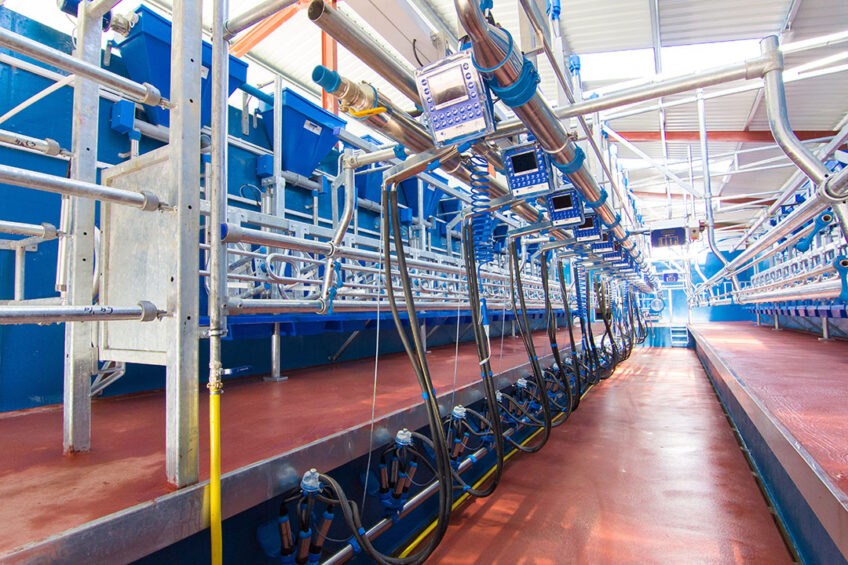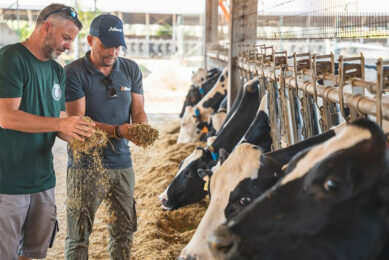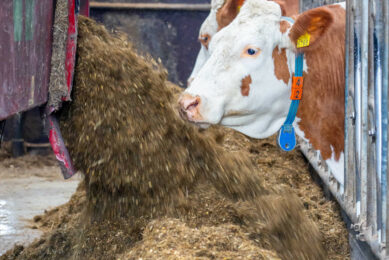Parlour preparation: Which decisions matter?

Thinking of installing or upgrading a new milking parlour can be a task in its own right. There are many decisions to make when preparing for this, and farmers must consider the right options that will work for them now as well as in the years to come.
The motivating factors when it comes to a new installation or upgrade include better working conditions, more cow comfort, and quicker milking time and labour, to name a few. When making the first decisions about which parlour design will work best, from herringbone to a rotary parlour, Rutger Schut, sales director at Europe Dairy Systems, the office of the Irish company Dairymaster on mainland Europe, has some insights. He says that the first discussions are normally around the number of cows a farmer has, the breed, and the farmer’s future plans. This will influence parlour type and size.

“If a customer has 300 cows and wants to invest in a rotary, the job can easily be done. But we do not know if the farmer wants to grow and what the future plans are, and you cannot extend a rotary. The farmer should think: Where do I want to grow to – will I grow from 300 to 1,000 cows for example? What is the time period for growth? If it is, for instance, 10–15 years then you can have a different discussion.”
In addition to this, making parlour decisions is not just about individual thought processes and whether a farmer wants to milk 2 or 3 times per day. It is also connected to location.
Location, location, location
When thinking about location, the country is an important factor that can sway the way a farmer thinks. Schut emphasises that each country is different; not only from farmer to farmer, but the mindset and work ethic are completely different once you cross a border. Questions to ask include what are labour costs in the country? How long do farmers want to milk every day? “Here in Europe, like Germany or the Netherlands, the labour costs are quite high. Therefore, you try to make a milking session in the parlour as short as possible. But if you go to the east of Germany, where the labour costs are also high, but the thinking is different, we often see that there they want to let milkers be occupied for at least 8 hours. Then you have a parlour with a capacity where they can reach 8 hours per day milking.”

But he highlights that it is not predictable, as all situations are different. For example, take a family farm in the north of Germany where maybe 150–300 cows are milked by a single farmer – in this situation the farmer would maybe request the biggest parlour possible with more automation options and where only 1–2 hours are spent milking, as other tasks need to be tended to.
Cow comfort in the parlour
When we think of cow comfort in the parlour, the options of wider entry lanes and walkways, easier and rapid exits and low noise parlour gates readily spring to mind. After all, a comfortable and less stressed cow produces a better yield. But it is also of utmost importance that the milker is comfortable, so ergonomics should be carefully considered – think about easy-to-reach udders, for example, with uncomplicated traffic when cows enter the parlour from a well-designed collection yard, and proper lighting, which is imperative to ensure that milking goes smoothly and the comfort needs of the milker are met. Decisions around these aspects may seem minor, but at the end of the day they count in a major way. With Covid-19 having affected so many industries around the globe during 2020, labour shortage is still a major issue. Small decisions about the parlour that affect the comfort of animals and the milker alike can make a difference when attracting a labour force.
Schut adds that when thinking of comfort in the parlour, farmers should think of keeping a short distance from the collection yard to the milking parlour and ensuring extension of a parlour is possible in future. Factors like how much milk cows give per milking (which influences the milking time) and whether there are any restrictions on the maximum number of cows a farmer can have in the area all come into play.

He adds, “At Dairymaster we have 2 types of parlours where the positioning of the cows is 50 degrees or 80 degrees side by side. The biggest thing when it comes to the farmer milking the cows instead of a robotic arm doing it is that the farmer sees all the cows and it’s possible to draft them out of the milking pit if something isn’t right, while continuing with the milking process.” How the cows come into the parlour is a good indication of comfort: How do they walk in? What is the traffic capacity? How big is the collection yard?
Consider a rotary, for instance. “First we look at the number of cows. We installed a few big rotaries where the cows are positioned at 15 degrees on the platform so the cow can exit easier. We build most parlours with 80 degrees; however, with this there is not such a big difference in terms of cow comfort. The most important aspect is that when a cow walks off the platform, it must be able to turn easily and gently. We also put rubber plates on the exit area so that the cow can turn on a rubber floor and therefore walk off quicker. That way, there is less stress, and it is also better for the hooves.”

Saving time in the milking parlour
There are ways farmers can save time in the milking parlour, including an efficient feeding system. For example, with individual feeding on a rotary it is very easy to feed the cows, because you only have one dosing system. This allows step feeding or dynamic feeding. In-parlour feeding all has to do with the feed management of the farmer and if the cows are on pasture or not. And individual feeding is a great system where you can reach up to 0.1 accuracy. “On a side-by-side parlour we also deliver individual feeding systems or lock feeding where all the cows get the same ration.”
While many brands on the market offer milking parlours, Schut says, “Dairymaster has a higher vacuum during the milking phase and a lower vacuum in the rest phase. So, we always say we milk like a calf drinks from a cow. A natural way of milking – with our milking technique, we are imitating nature. There are advantages with this system. Firstly, our clusters will seldom fall off or have no liner slippage. The cluster hangs extremely well on the cow. You do not need to have someone to pick up the clusters. Secondly, the lower vacuum in the rest phase will create a better teat end condition. The calf sucks quite hard but then it has to breathe and the calf releases.” Schut says that this mimicking of the calf’s sucking behaviour is better for teat blood circulation and creates less stress on the udder. “This really has an effect on the health of the cow and the teat condition and increases the milk flow. Because of the more litres of milk per minute, we can milk a cow up to 50 seconds quicker than the competition,” he adds.

“Quicker milking is of course nice for the milker, but actually if you have less time that the cluster hangs on a cow, this is always better for the teat, udder and cow health in general,” he says.
Schut highlights the fact that the future of milking is collecting online data from the cow, and there is no doubt that investing in the right parlour or extending automation can make a farmer’s life easier and save costs in the short and long terms. Therefore, the level of automation depends on whether farmers are doing the milking or have employees to do it. Considering all these points when it comes to parlour decision-making, Schut is clear about one thing: “Measure as much as you can online. If you do this, you can react quickly to any problems, as access to data is immediate. Having the right data available can speed up the process of making the right decisions and thereby help you manage a herd more efficiently.”
Dairymaster manufactures hi-tech dairy equipment, in the product lines of milking equipment, feeding equipment, automatic manure scrapers, milk cooling tanks and health and fertility monitoring systems. The company is headquartered in Causeway, County Kerry. For more info: www.dairymaster.com
Join 13,000+ subscribers
Subscribe to our newsletter to stay updated about all the need-to-know content in the dairy sector, two times a week.










